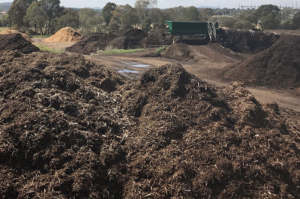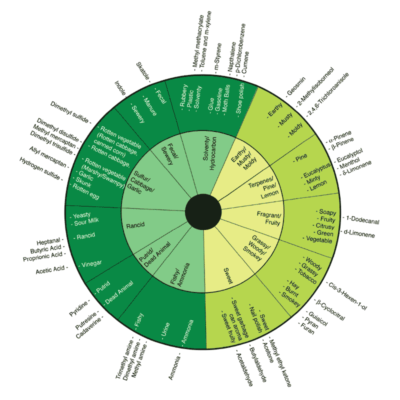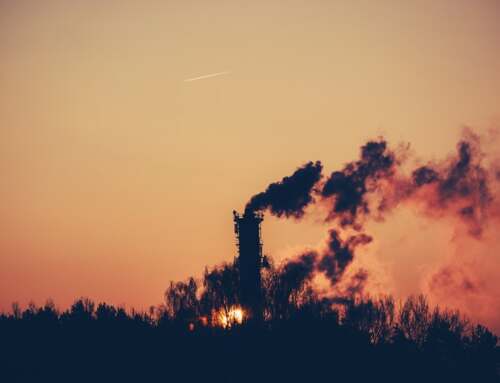Composting’s effect on air quality
 Pinpointing the cause of poor air quality can be difficult at times – leading to unnecessarily prolonged exposure to hazardous pollutants for workers, neighbours and the environment. In this expert series, we take a closer look at specific industries and some of the more common contaminants that could affect the air in your workplace or home, as well as treatment strategies to deal with it.
Pinpointing the cause of poor air quality can be difficult at times – leading to unnecessarily prolonged exposure to hazardous pollutants for workers, neighbours and the environment. In this expert series, we take a closer look at specific industries and some of the more common contaminants that could affect the air in your workplace or home, as well as treatment strategies to deal with it.
Composting reduces waste
Composting on an industrial scale helps reduce the amount of waste products going to landfill and the process can improve the agricultural, landscape and nursery industries by providing nutrient rich plant food.
As with the breakdown of wastewater covered earlier in this series, there are many compounds created during the composting process. During the breakdown of material, many simultaneous chemical reactions occur that convert complex organic molecules into simpler ones.
By-products of these reactions include volatile gases such as CO2, CH4, N2O, sulphur compounds and other volatile organic compounds (VOCs) (Dhamodharan, Varma, Veluchamy, Pugazhendhi, & Rajendran, 2019).
The image above can be used to help categorise specific chemical families by odour character (Suffet, et al 2009). There are several common large-scale techniques for processing green waste, and each come with their own unique sources of emissions.
Windrow composting
The most common composting system for processing large volumes of organic waste is the turned windrow method. Long piles of organic waste – called ‘windrows’ – are managed so that they remain warm, oxygenated and moist to create a hospitable environment for the micro-organisms involved in decomposition. In order to maintain an oxygenated heap, the windrows are mechanically turned by manual labour or machinery to help allow fresh air to flow into the piles.
If the turning cycle does not happen frequently enough, the cores of the windrows can become anaerobic environments. This results in the creation of more harmful by-products (H2S for example) (Sustainability Victoria, 2009). If the windrow is turned in this state, the trapped emissions in its core are disturbed and distributed into the ambient atmosphere. Fresh oxygen would be used quickly, and future anaerobic pockets would likely form given enough time. It is important to maintain an acceptable turning regime to minimise the likelihood of anaerobic conditions and a resulting foul odour.
Since windrows cover large stretches of land, wind currents can also alter the expected area that these emissions would impact. Regular monitoring of local weather conditions will help prepare for different levels of emissions throughout the composting process.
Aerated Static Pile composting
Aerated Static Piles run on a similar principle to windrows except they deal with smaller quantities of waste and use a more automatic form of oxygenation. Instead of physical pile turning, bulking agents are used to aerate the pile. These are loose layers of sturdier materials (shredded newspaper and wood chips) such that air can flow from the bottom of the pile to the top.
A network of pipes can deliver air or draw it out on a timer. Pile size is an important factor with this method, since heavier piles are harder to effectively prop up with bulking agent – leading to improper diffusion of oxygen (Dhamodharan, Varma, Veluchamy, Pugazhendhi, & Rajendran, 2019).
Though efficient, these systems must be monitored closely. If any flaws or sudden changes occur in the incoming food stock or environmental conditions, steps must be taken to counteract this quickly before the whole pile is affected.
Shelter, biofilters and ventilation may also be necessary since constant odour emissions are more likely to occur, rather than periodic emissions from turning. A thick layer of finished compost positioned on top of the pile may help alleviate odours.
Careful monitoring of moisture and temperature are necessary to keep the outside of the pile closely resembling that of the core to ensure uniform decomposition.
In-vessel composting
An alternative approach is to feed the waste material into a vat or drum and mechanically stir it. This technique can process large amounts of waste without requiring as much land space as windrows. It can be easily automated and does not necessarily rely on bulking agents for aeration. It can also accommodate virtually any type of organic waste.
As with all composting facilities, incoming waste must be carefully considered for its nutrient, nitrogen and carbon ratios in order to keep the decomposition processes under control (United States Environmental Protection Agency, 2016).
In terms of air quality, the vessels should employ a well-established ventilation system with biofilters in order to effectively convert or reduce the various volatile compounds created (Sustainability Victoria, 2009). This method is effective, though often expensive.
The finished product
Once the compost is finally produced, emissions still need to be considered. Improper storage of the finished product can lead to an unplanned increase in the facility’s odourous and greenhouse emissions. All areas of the composting process – from waste intake, through to storage of finished compost – must be carefully monitored in order to ensure that the facility is aware of any potential emissions to the surrounding environment.
The emissions from composting vary and are related to the initial feedstock materials composted as well as the composting methodology adopted (Dhamodharan, Varma, Veluchamy, Pugazhendhi, & Rajendran, 2019). It is important that each composting facility is acutely aware of the kinds of organic waste its micro-organisms can digest efficiently and safely.
A dynamic balance between the acceptable types of incoming waste, environmental conditions and microbial species diversity must be consistently monitored and met to ensure that the facility is aware of any potential emissions to the surrounding environment.
The emissions from composting vary and are related to the initial feedstock materials composted as well as the composting methodology adopted (Dhamodharan, Varma, Veluchamy, Pugazhendhi, & Rajendran, 2019). It is important that each composting facility is acutely aware of the kinds of organic waste its micro-organisms can digest efficiently and safely. A dynamic balance between the acceptable types of incoming waste, environmental conditions and microbial species diversity and health must be consistently monitored and met. This help a composting facility function to the best of its ability.
References
Dhamodharan, K., Varma, V. S., Veluchamy, C., Pugazhendhi, A., & Rajendran, K. (2019). Emission of volatile organic compounds from composting: A review on assessment, treatment and perspectives. Science of the Total Environment, 133725.
Suffet, M., Senante, E., Decottignies, V., & Bruchet, A. (2009). Sensory Assessment and Characterization of Odor Nuisance Emissions during the Composting of Wastewater Biosolids. Water Environment Research, 670-679.
Sustainability Victoria. (2009). Guide to Best Practice for Organics Recovery. Melbourne, Victoria, Australia.
United States Environmental Protection Agency. (2016, August 29). Types of Composting and Understanding the process. Retrieved from Sustainable Management of Food: https://www.epa.gov/sustainable-management-food/types-composting-and-understanding-process.












